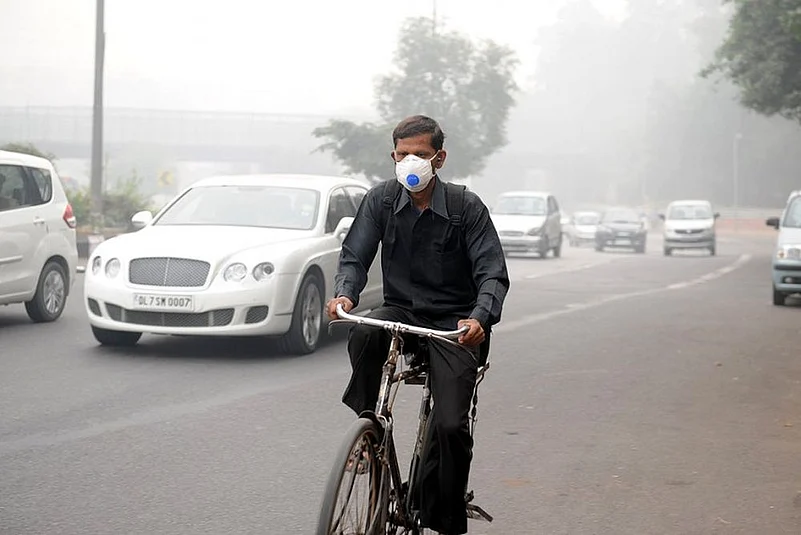Air quality in Delhi is set to worsen in the next few days, but this time the city has no one but itself to blame, least of all paddy stubble-burning in Haryana and Punjab.
This conclusion can be drawn going by the forecast of the India Meteorological Department and the Central Pollution Control Board (CPCB) and their observations on the prevailing weather conditions.
CPCB member secretary A Sudhakar told PTI that as per the IMD forecast, easterly winds, blowing from Uttar Pradesh, will introduce moisture in the city's air over the next few days, and fog will start building from October 29.
Advertisement
"As a result, pollutants having local sources (vehicular combustion, road dust, smoke from garbage-burning) shall remain at the ground level for longer hours. Their ground level concentration will be building up," he said.
The weather scientist said the city residents can expect pollution levels to go up till October 29, some indications of which have started appearing.
The sky was blue until last week, but now it is gradually turning hazy, he said, predicting a build-up of pollutants over the next three to four days.
Sudhakar said the forecast can be interpreted as good as well as bad, considering the fact that there has been no impact of the paddy stubble-burning in neighbouring Haryana and Punjab in the city's air unlike previous years.
Advertisement
"North westerly or westerly winds, which are generally dry but laden with smoke, are not entering the capital, thus preventing the influx of air-borne residue of stubble-burning. That way it is good but easterly winds will bring a lot of moisture, which will trap local pollutants," he said.
Every winter, as pollution levels spike across the region, especially in Delhi, the states in the region indulge in blame game over the factors behind the rise. Delhi blames Haryana and Punjab saying their "inability" to contain stubble-burning makes the capital suffer.
However, the prevailing meteorological conditions leave no room for such buck-passing, as the moisture will largely trap pollutants that are emitted by sources present within the city and ground level action can help prevent the situation from going out of hand.
For example, the plunge in air quality after Diwali was largely due to burning of firecrackers, despite a ban on their sale, which the residents of the megapolis could very well have avoided.
The Supreme Court-mandated Environment Pollution (Prevention and Control) Authority has already enforced a raft of measures under the 'very poor and 'severe' categories of the Graded Response Action Plan (GRAP), including a ban on diesel generator sets with certain exemptions. (PTI)



















